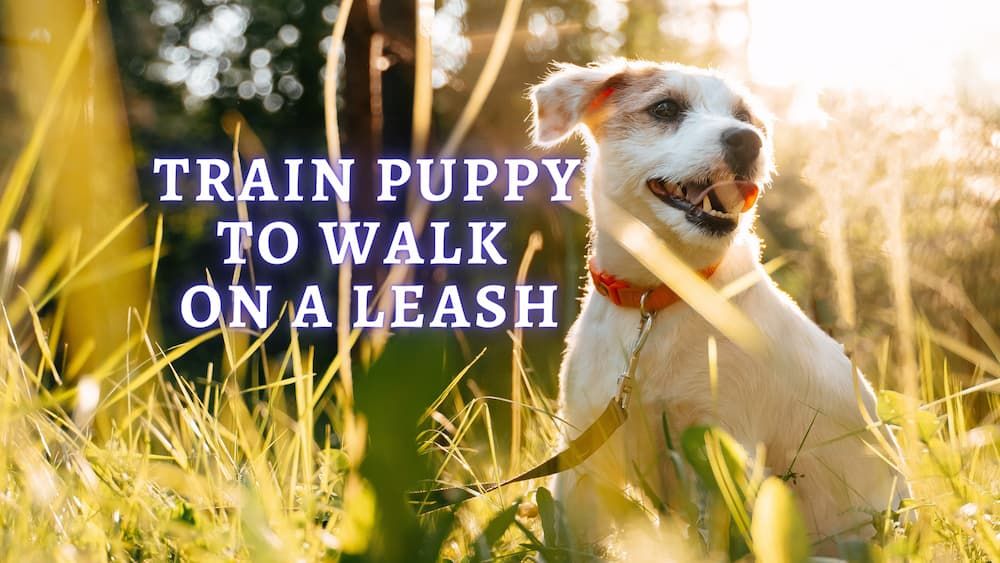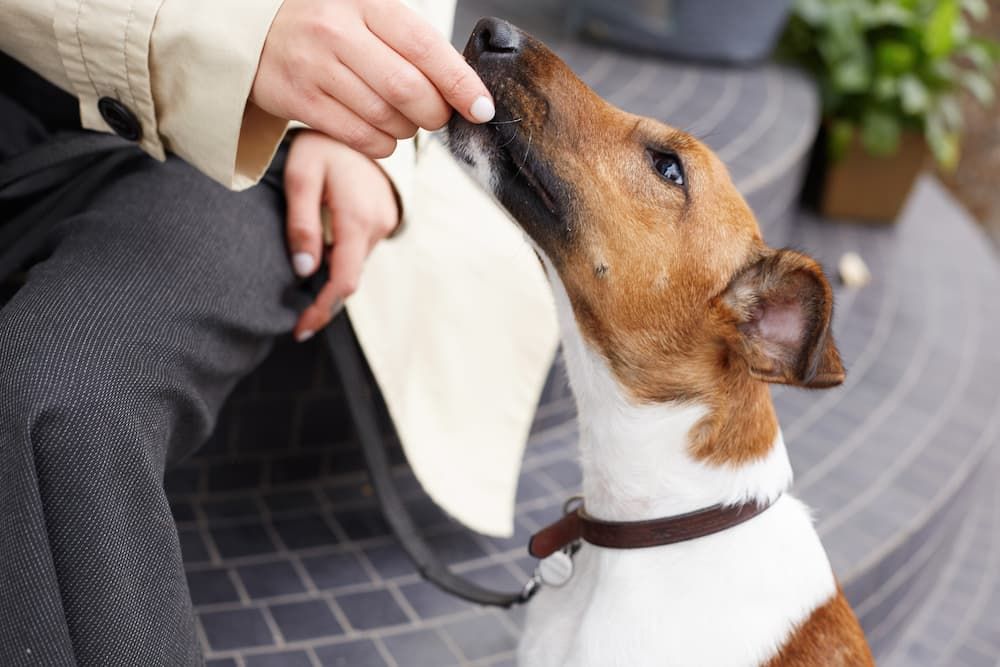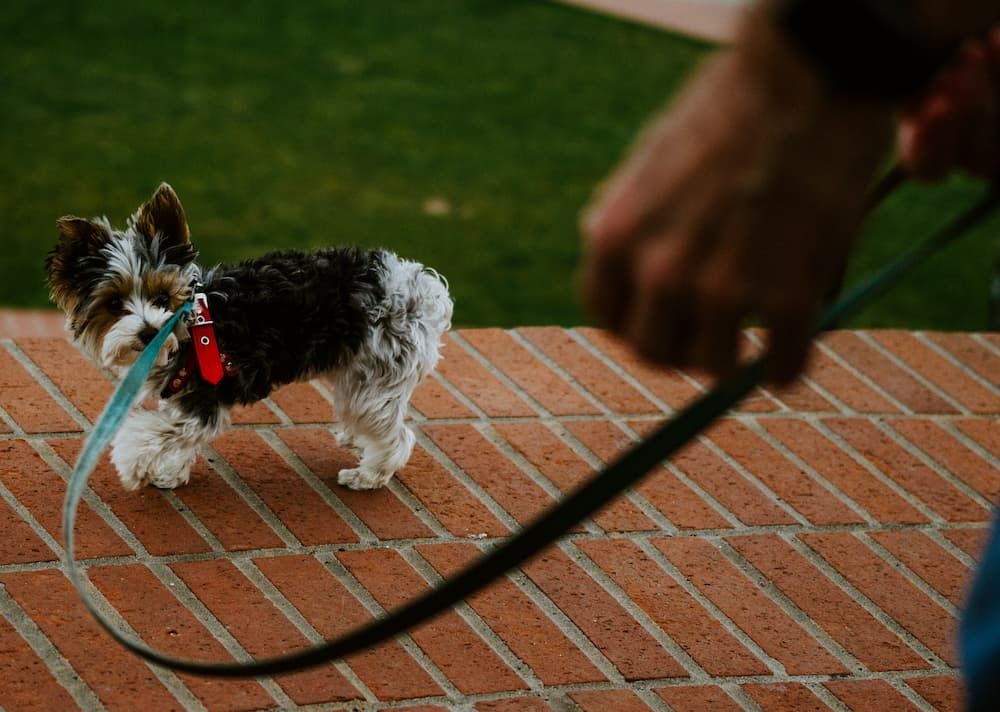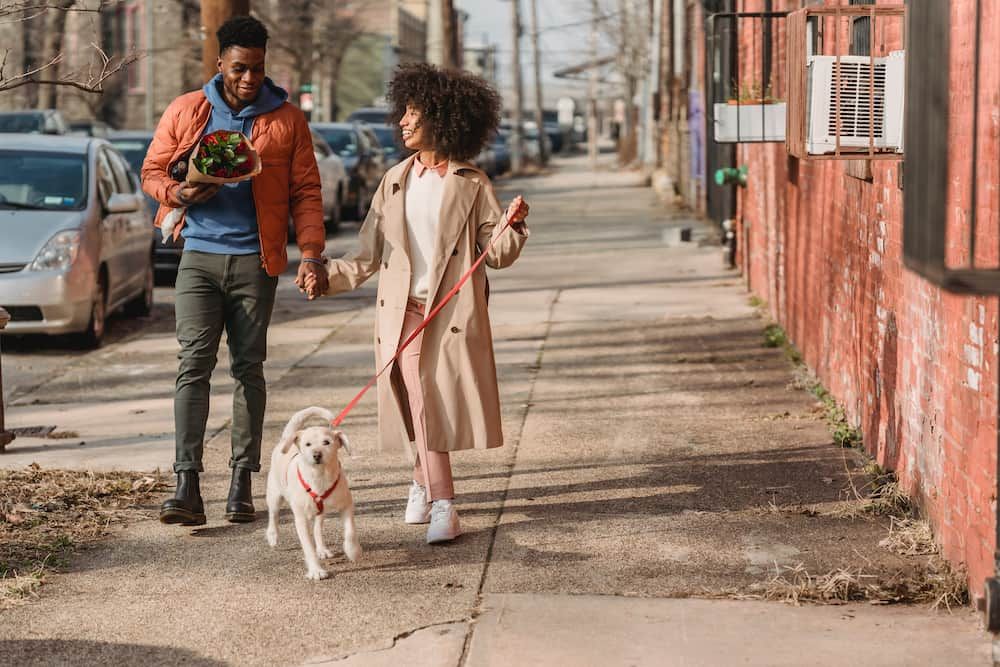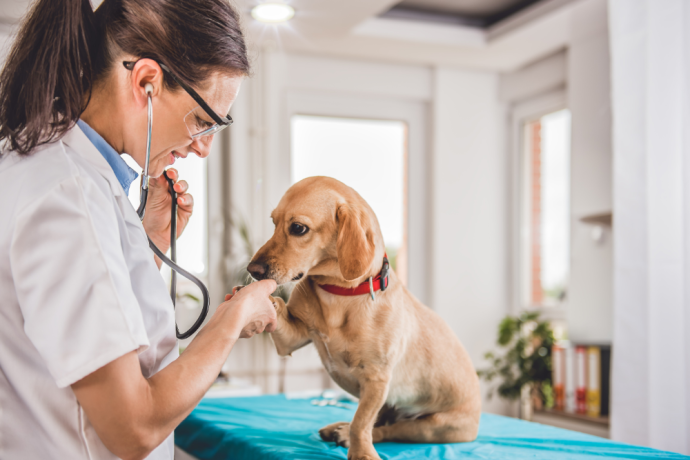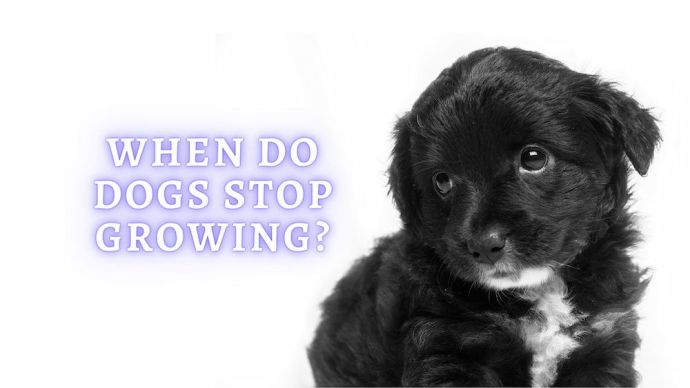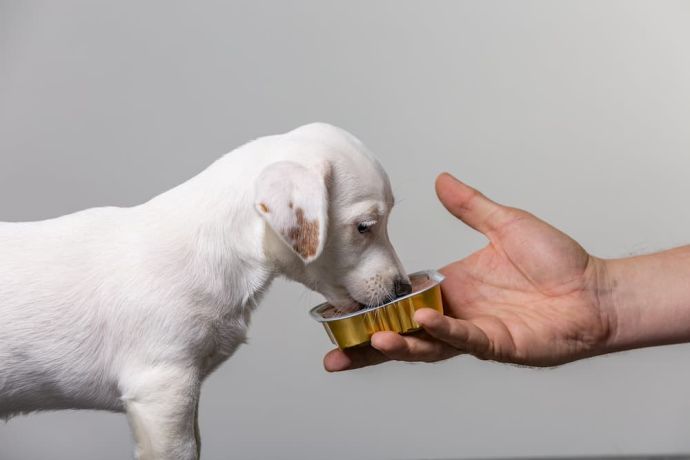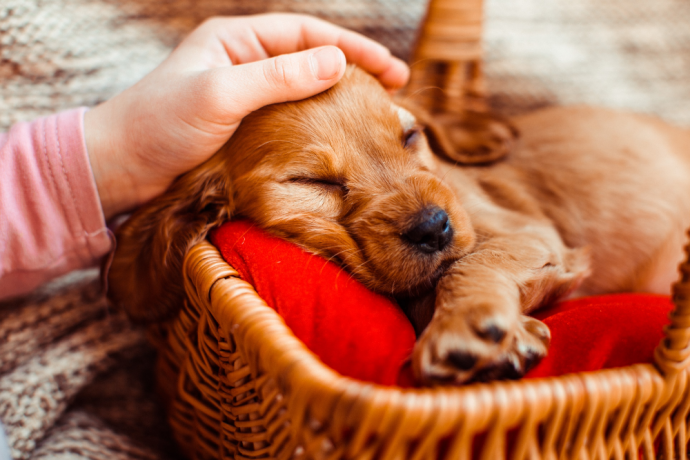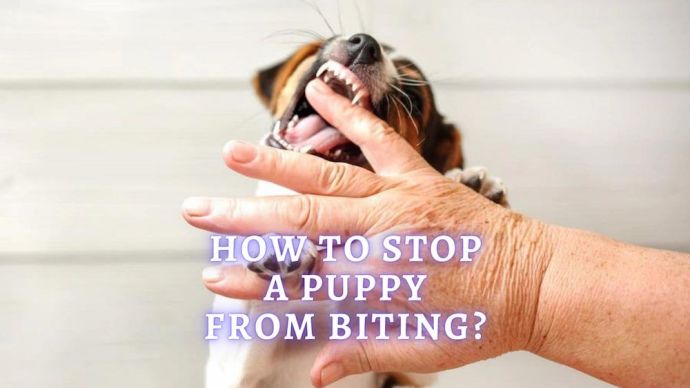How to Train a Puppy to Walk on a Leash?
Written by:
Author: Vicki Smirnova
Vicki Smirnova is a professional writer and editor who adores animals and helps readers get along well with their pets. She has been working in digital media for more than 5 years and has great experience writing content about lifestyle, including pets. Vicki specializes in dog health and nutrition, cat feeding, dog training. She is an aquarium lover and is passionate to write about fish care at home. Also, Vicki headed several websites and worked as a news editor.
View all 244 articlesLearn about our editorial process and veterinary review board.
Viewed: 349
Updated on: 04/11/2022
One of the most important things you will ever have to do as a dog parent is oversee your fur baby’s training regimen. Training provides mental stimulation and ensures that you and your dog have a healthy and trusting relationship. Among the routines, you have to focus on training your dog to walk on a leash—and that routine can begin as early as their puppyhood.
How should you go about leash training your puppy, and what are the things that you should expect from the process? For example, will buy a collar and leash be enough, or will you need to invest in extra accessories such as custom branded dog bandanas? Here’s a list of everything that a new dog parent needs to know.
Why You Should Start Leash Training Your Puppy ASAP
You can already start leash training your puppy as soon as they’re four to six weeks old. Yet, the earlier you start the training, the better it will be for both you and your puppy. Here are the top three reasons why:
- Leash Training is Easiest for Younger Dogs. Contrary to how the saying goes, you can definitely teach an older dog new tricks. But the fact remains that it’s easiest to teach tricks to younger dogs, as they’re in the best position to learn new habits. Of course, this applies to leash training, so make sure to get a good head start.
- You’ll Have Fewer Behavioral Problems When Your Dog Gets Older. If you begin leash training while your dog is still a puppy, they’ll grow up with fewer destructive behaviors resulting from boredom, lack of exercise, or proper discipline. The lessons your puppy will learn from leash training will stay with them for the rest of their lives.
- It Serves as Healthy Exercise for Your Puppy. You may already know this from firsthand experience, but puppies are quite energetic. It will take some effort to provide them with the healthy physical and mental engagement that they need. The rewards are significant.
Successful leash training and walking your puppy will result in good digestion and sleeping habits for them. These activities will also guarantee them a healthy outlet for their energy.
The Long-term Benefits of Proper Leash Training for Puppies
There are many of long-term advantages for you and your puppy when you reach the milestone of successful leash training. They are the following:
- You’ll Teach Them Discipline at an Early Age. Puppies need both affection and discipline from their owners while they’re being trained. Leash training is a start for you to teach your puppy key concepts in the discipline, like following your commands and respecting other people’s boundaries.
- You’ll Help Protect the Natural Resources in Your Neighborhood. One of your end goals in leash training your puppy is to be able to walk them in the green areas of your neighborhood. But you have to do leash training so that your puppy doesn’t cause damage to natural resources and wildlife in the area, such as in public parks. [1] Fortunately, you can prevent them from causing any destruction by training them to be calm and to listen to your commands while walking.
- It’s a Courtesy to Your Neighbors. You may know for sure that your puppy has a sweet nature and doesn’t mean to harm anyone else. That said, training them to be obedient on a leash is an act of extra consideration to your neighbors.
- You’ll Have the Opportunity to Bond with Your Puppy. Leash training is not one of the easiest things to do when raising a pup. But once you and your puppy get the hang of it, you’ll be able to build trust and rapport with each other. Try to see leash training as an opportunity to bond with your puppy and spend time together.
- You Can Nurture Your Puppy’s Potential to be a Guide Dog. Have you ever dreamed of raising a guide dog or a service animal? If so, then you’ll be able to tell if your puppy has the aptitude for it by how well they do at their leash training. Research by M. E. Goddard and R. G. Beilharz, done in the late 1980s,[2] revealed that good scores in leash training seemed to correlate with potential as a guide dog. If your puppy excels at listening to your commands during leash training, they may be approved as a guide or emotional support dog.
Everything You Need to Start Leash Training Your Puppy
Before you start leash training your puppy, make sure to have the following items on hand:
- A Collar or Harness. First, you’ll need a collar or harness to attach the leash to. Make sure that it’s appropriate for their size. If it’s too loose, it might slide off your puppy when you’re out walking, and that might cause them to run away from you. It will cause your puppy discomfort and make leash training more difficult for both of you if it’s too tight.
- A Leash of Appropriate Length. Next, you’ll need a leash that provides your pooch with enough leeway while they’re walking. Take note that bigger puppy breeds will need longer leashes. Getting a long-enough leash is also a safety precaution for you, as it will prevent you from getting rope burn or being dragged by a particularly strong or energetic puppy.
- Dog Clothing. It’s also recommended that you shop for dog clothing for your puppy. An item like a bandana can protect them from sunburn on hot days. It will also make them easily visible to other people so that the latter will know to make way for you and your puppy. It can even act as an emergency tourniquet in case the puppy gets injured.
- Treats. Whether you’re doing leash training inside or outside of your home, it’s good to stock up on your puppy’s favorite treats. These will reward them for the right behavior and motivate them to do well during each step of your leash training.
- A Clicker. Also, you may want to get a clicker to serve as an auditory cue for rewarding positive behavior to puppy treats. You can use the clicker in tandem with your puppy treats to emphasize correct behavior, like your puppy returning to you when you call them.
6 Steps for Completing Leash Training with Your Puppy
There are six basic steps to training your pooch to walk on a leash. The principle is to get them used to wear a collar and leash, reward them, and move on from walking a few steps to walk longer distances.
Step 1: Get Them Used to Their Collar or Harness
Before you start leash training in earnest, you should get your puppy used to the feeling of wearing a collar or harness. Let them spend some time in just their collar or their harness, and then slowly acclimatize them to the leash. Have your treats ready and use a cheerful voice when you bring out the collar, harness, and leash so that they have a positive association to all these.
Step 2: Establish a System for Positive Reinforcement
As opposed to negative reinforcement, providing positive reinforcement is the approach you should take while leash training your puppy. Your dog will have the easiest time learning to walk on a leash if they have something to motivate them for good behavior. Knowing that you can use your puppy’s favorite treats to your advantage. Keep them in your pocket or a fanny pack, and put them on the same side you want your puppy to walk on.
For example, place the treats somewhere on the right side of your body if you want your puppy to walk to the right.
Step 3: Begin with the Two-step Method
Next, practice a routine of taking a few steps forward in one direction, stopping, and then rewarding your puppy with a treat when they follow you.
Start with about two steps, then gradually increase the number of steps you take before you give your puppy a treat. Don’t forget to signal the end of your routine with a verbal cue like “all done” or “done today.”
Step 4: Hold Short Leash Training Sessions Inside of Your Home
Though puppies have a lot of energy, they also have shorter attention spans than older and more mature dogs. With that in mind, schedule time for leash training every day, but keep each session short. About 15 to 20 minutes per day should be enough. Try to end the session while your puppy is still willing to do more to prevent physical or mental overexertion on their part. Once they get the hang of it, you can move on to longer daily walks outside.
Step 5: Continue in Your Backyard Before Hitting the Park
Start your leash training in environments that are familiar and easy for you to control, then move on to newer settings. With that in mind, your first leash training sessions should be held inside of your home. Once your pup has gotten used to their leash and walking short distances in it, take them outside and do a few rounds in your backyard. Don’t hit the park until you and your puppy have mastered basic commands and your puppy has learned to walk in the “heel” position, or right next to you (as opposed to in front of you or behind you).
Step 6: Try Progressing into Loose Leash Walking
When you and your puppy have gained some confidence, you can graduate into what’s called “loose leash walking,” or walking out of the heel position.[3]
Hold the leash in a J-shape and pick a verbal cue for this new type of walk, like “let’s walk” or “at ease.” Make it your goal to get your puppy used to walk with more slack, all without pulling you forward.
READ MORE: How to Socialize a Puppy with other Dogs?
4 Common Leash Training Problems and How to Troubleshoot Them
In some cases, leash training may prove to be a bit difficult for you and your puppy. [4] Here’s some advice on troubleshooting the most common issues when leash training and getting the headway you need in your routine:
1. Pulls Too Eagerly at Their Leash
Does your puppy pull ahead or jerk forward too quickly when you’re walking them? If so, remember not to pull back or to yank on your leash, or else you risk hurting your dog. Listen to the advice of experts and “become like a tree” whenever this happens. Stand still and calmly hold your ground until your puppy comes back to you.
2. Barks at Humans, Objects, or Other Dogs
If you’ve already started walking your puppy in public places, you may have a problem with them being excitable and barking at other dogs, at people, or at moving objects like cars or bikes. Often, the root cause of this is a lack of exercise and mental stimulation before walking. Knowing that, wait until they’re calm or when they’ve already expended a little energy before you go outside.
3. Lunges at Something While Walking
In other cases, your puppy may want to lunge at something while you’re out walking. This instinct to lunge or chase may be common for certain puppy breeds, such as the Belgian Malinois or the border collie. At any rate, don’t panic, and respond by increasing the distance between your puppy and the object of their attention. You can also distract them with a treat and direct their attention back to you.
4. Nibbles or Bites on the Leash
Does your puppy have a problem with biting or chewing on their leash? Address this right away to prevent further damage to your equipment and to discourage other destructive behaviors. If they give in to the impulse to nibble or bite, stop walking and get them to follow a simple command like “sit” or “stay.” Then, reward them for the good behavior they demonstrated instead of biting or nibbling.
Ensure there’s enough time between when you stop and reward your puppy. That way, they won’t think that getting the treat for biting the leash. In addition, offer them other tugging or biting toys while they’re at home.
Some Last Tips for Training Your Puppy to Walk on a Leash
Here are some last reminders to bolster your confidence during leash training sessions with your puppy:
- Right Equipment. Good equipment makes leash training easier, and it also keeps you and your dog safe. Prevent accidents that occur from leashes or collars breaking by investing in quality equipment. Replace your puppy’s equipment when they’ve grown in size or when it becomes damaged.
- Take It Slow. It can take a couple of months for your puppy to completely get used to walking on a leash. As with the other tasks in the training, be patient with your dog. Show them love and support when they excel and don’t be discouraged if it seems like you’ve regressed. If you need to dial back or repeat a few steps in your training routine, try again until your puppy succeeds.
- Don’t Overburden Your Pup. From leash training, you’ll realize just how smart your puppy is and how quickly they’re able to adjust to changes in your routine. But don’t forget that they’re still a puppy and that they need allowance to grow. Trust the process, and be the kind of pet parent that isn’t so harsh or demanding of their puppy.
READ MORE: Sick Puppy 101 (Vet Advice)
Leash training is only one part of your overall training regimen with your puppy. But it’s one of the areas in which you’ll see the most tangible rewards. They include your puppy’s overall health, their ability to follow your commands, and their relationship with you as their pet parent.
Article Sources:
- Jorgensen, Joel G., and Mary Bomberger Brown. “Evaluating Persuasive Messages to Influence Dog Leash Law Compliance at a Public Area in the Great Plains.” Great Plains Research, vol. 27, no. 2, 2017, pp. 131–142. JSTOR, www.jstor.org/stable/44685775.
- Goddard, M. E., and R. G. Beilharz. “Early prediction of adult behaviour in potential guide dogs.” Applied Animal Behaviour Science vol. 15, issue 3, 1986, www.sciencedirect.com/science/article/abs/pii/016815918690095X.
- “Teach your dog to walk on a loose leash.” Animal Humane Society, www.akc.org/expert-advice/training/teach-puppy-walk-leash/.
- Donovan, Liz. “How to Teach a Puppy to Walk on a Leash.” American Kennel Club, 30 Aug 2019, www.akc.org/expert-advice/training/teach-puppy-walk-leash/.
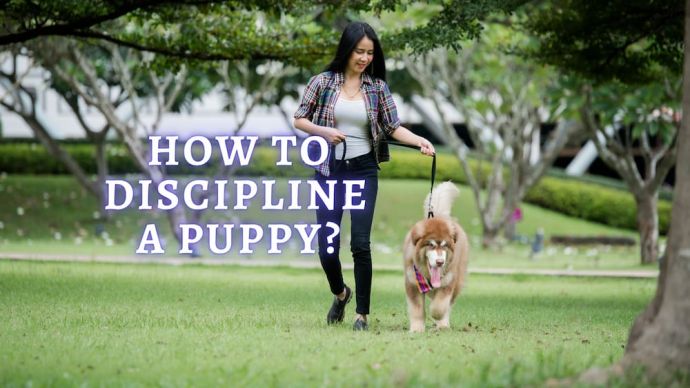 Puppy Care How to Discipline a Puppy? Strategies to Teach Your Puppy Proper Behavior
Puppy Care How to Discipline a Puppy? Strategies to Teach Your Puppy Proper Behavior - 172
- 0
 Puppy Care How Much Water Should A Puppy Drink? Vet Advice On Puppies Daily Water Intake
Puppy Care How Much Water Should A Puppy Drink? Vet Advice On Puppies Daily Water Intake - 421
- 0
 Dog Veterinary Tips Why is my Dog throwing up: Causes and Preventing (Veterinary Advice)
Dog Veterinary Tips Why is my Dog throwing up: Causes and Preventing (Veterinary Advice) - 23424
- 5
 Dog Care Why Is My Dog Bleeding From Its Butt? Causes and treatment of rectal bleeding in the dog
Dog Care Why Is My Dog Bleeding From Its Butt? Causes and treatment of rectal bleeding in the dog - 22076
- 0
 Dog Care My Dog Keeps Scratching His Mouth: Reasons Why Your Dog Scratching Face
Dog Care My Dog Keeps Scratching His Mouth: Reasons Why Your Dog Scratching Face - 17561
- 1









